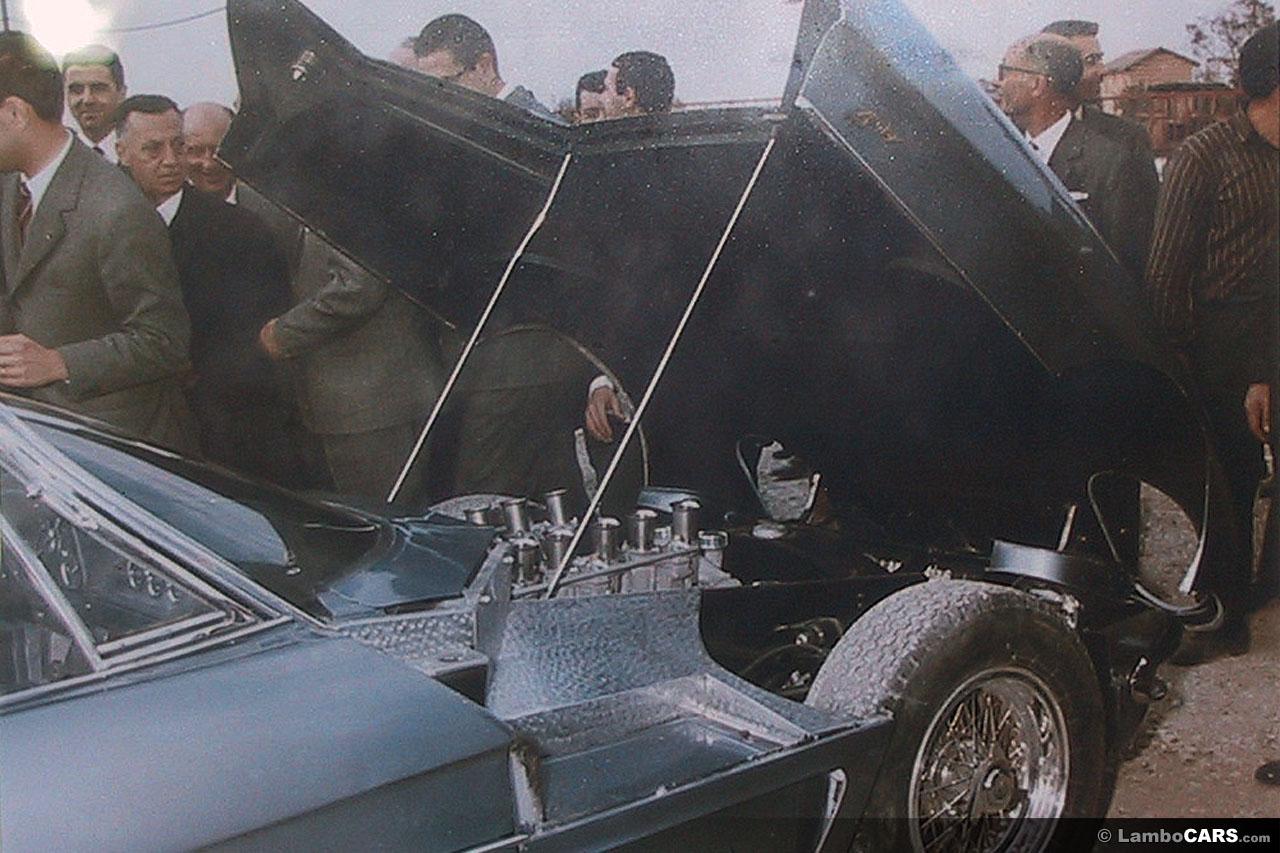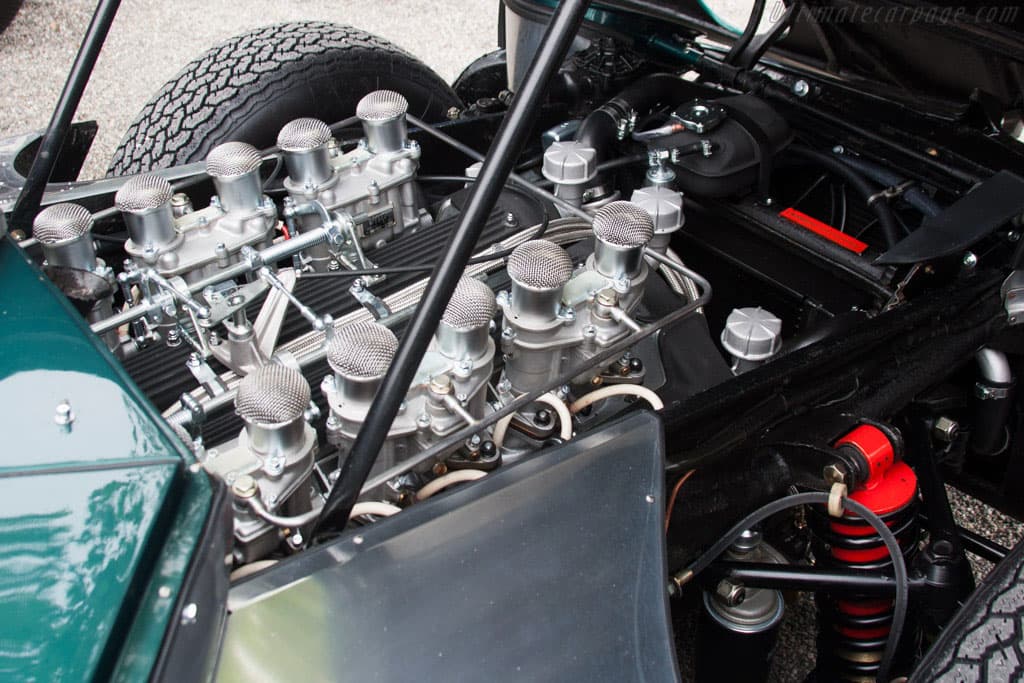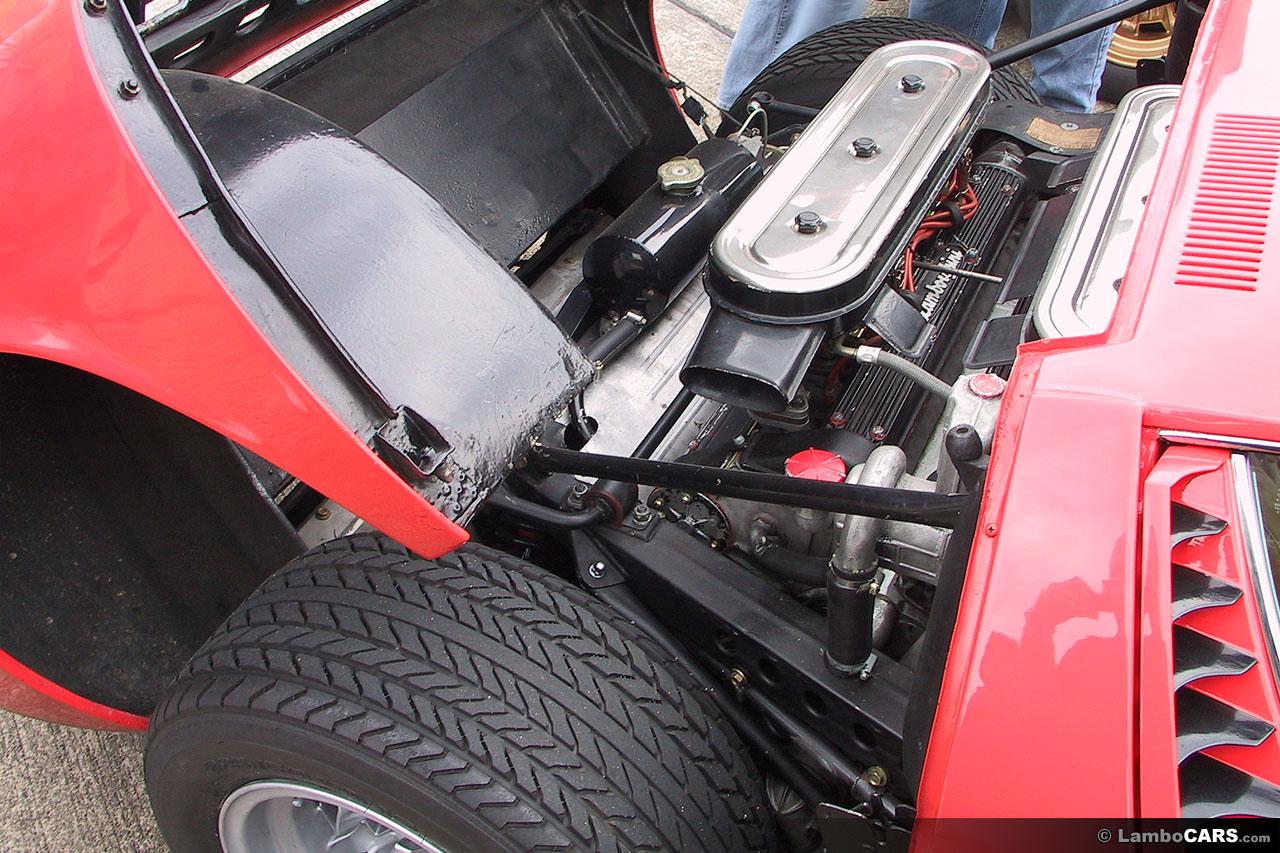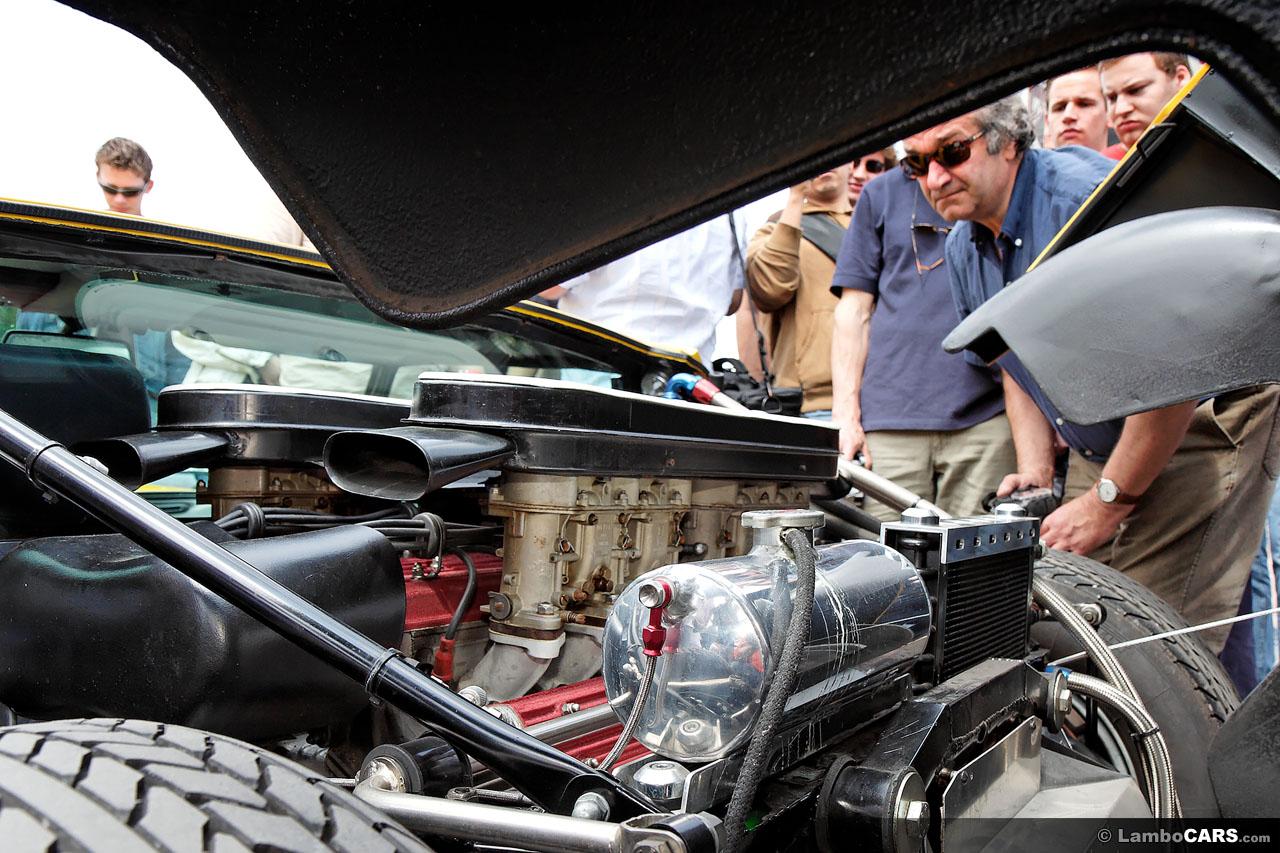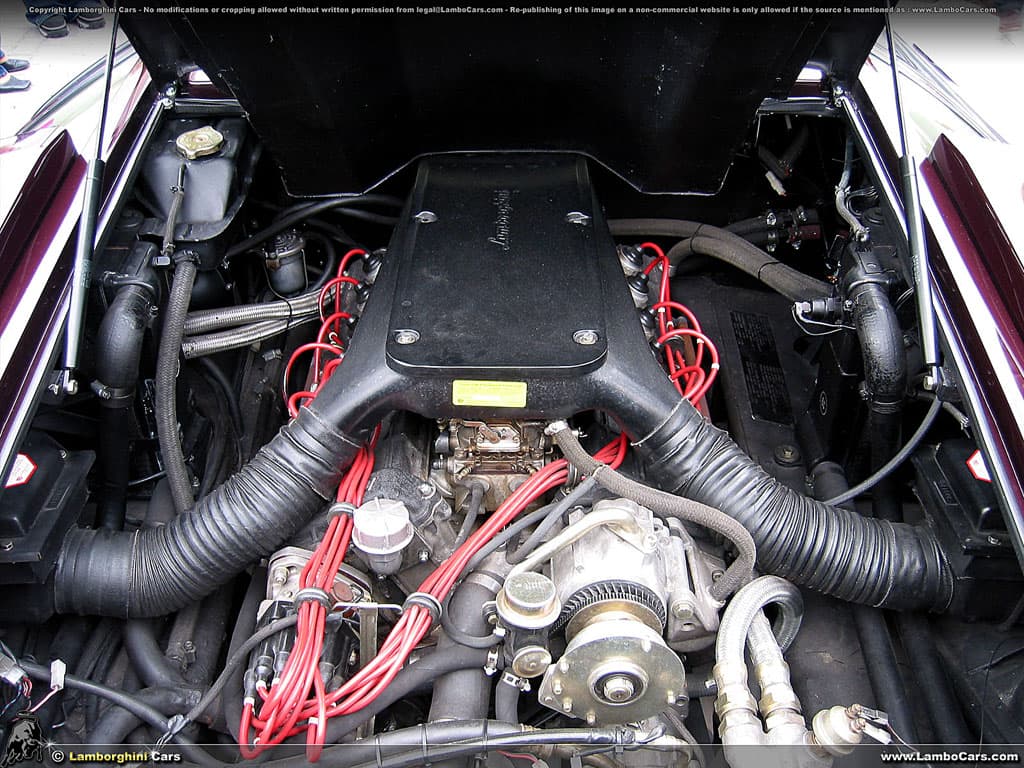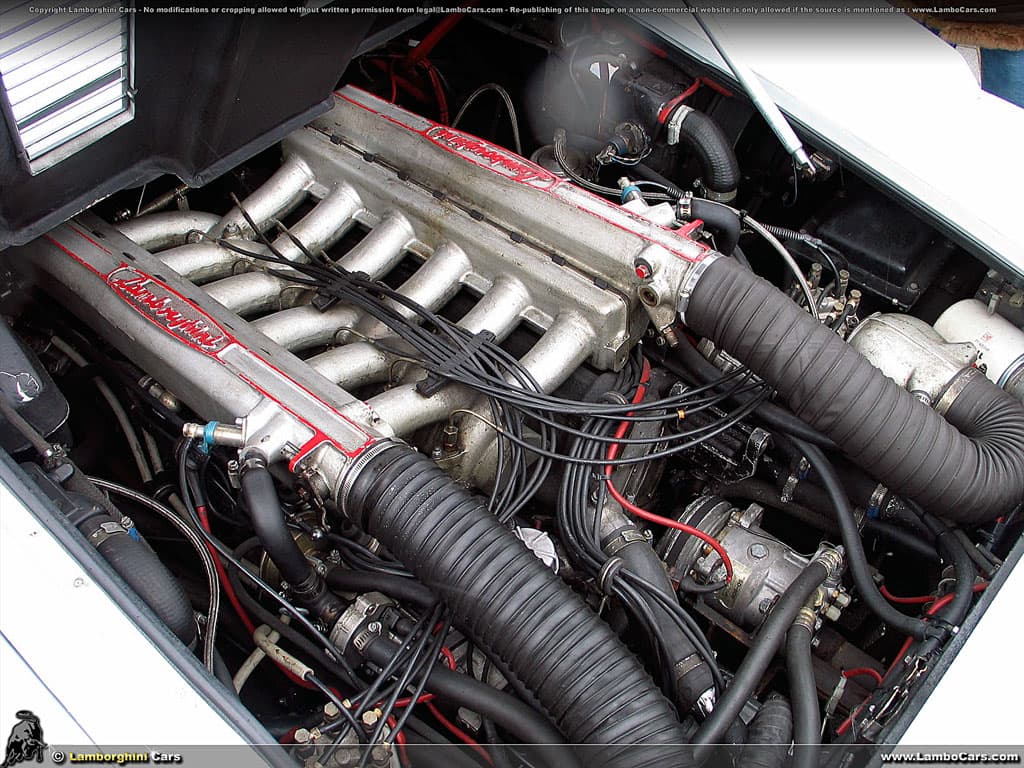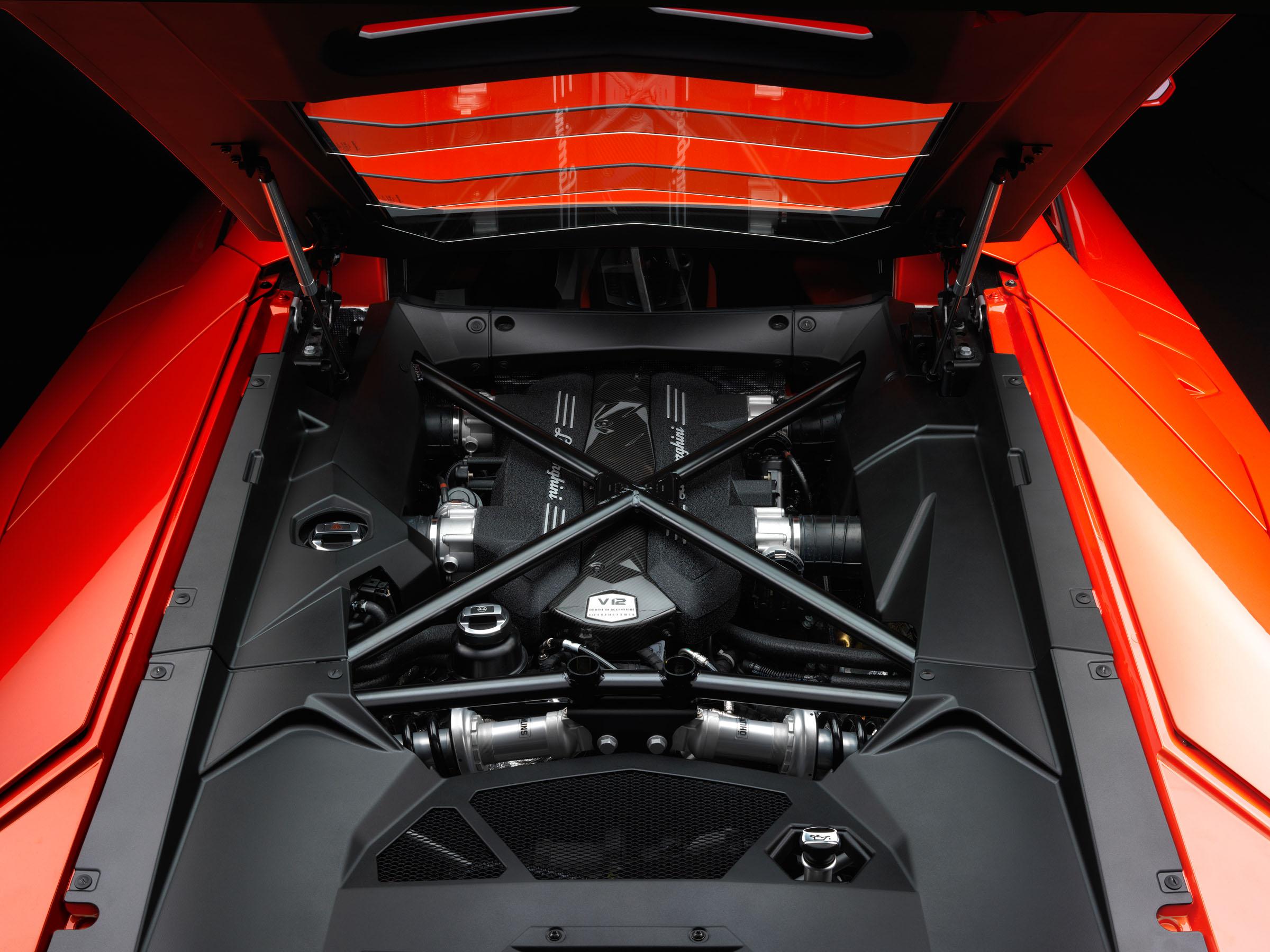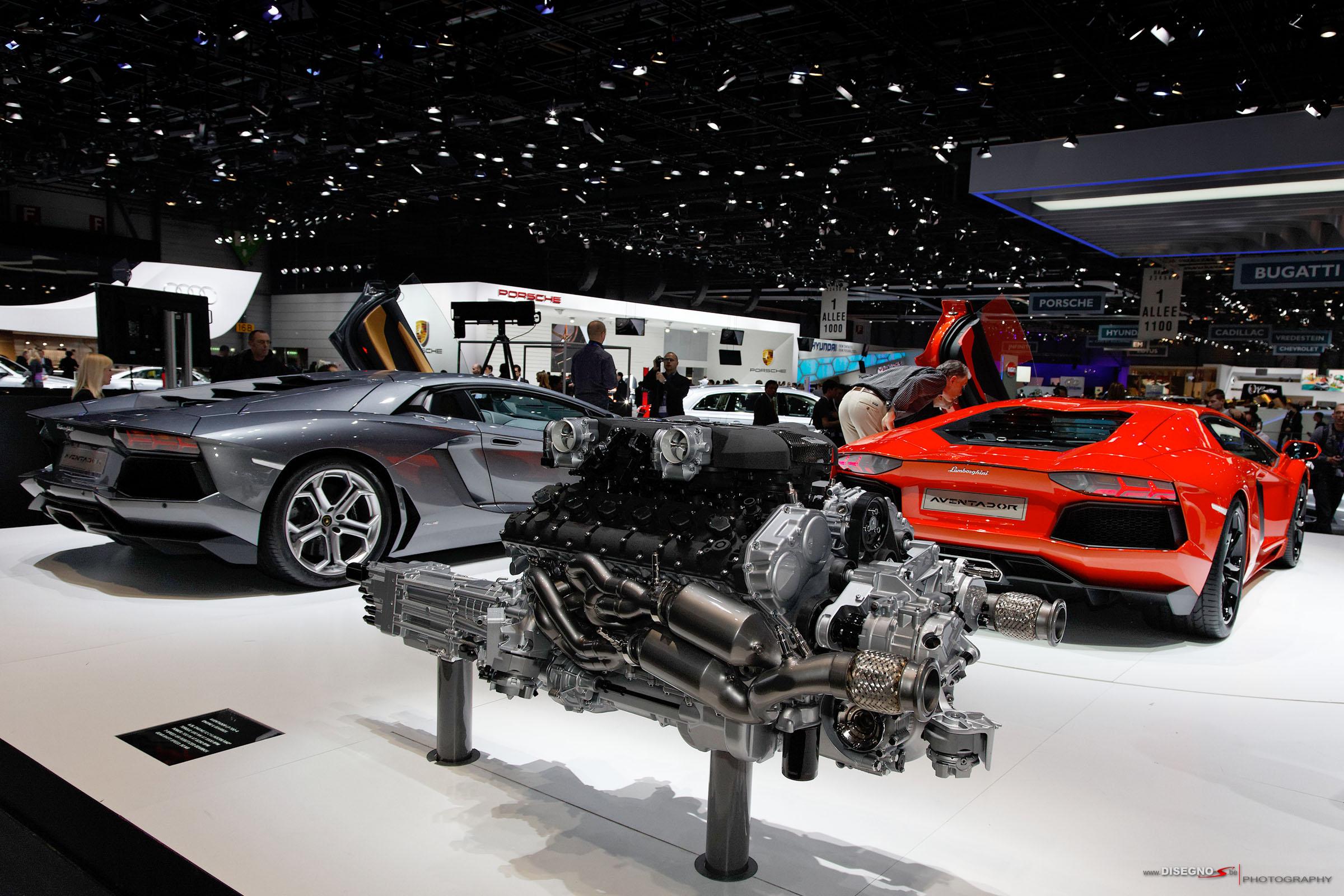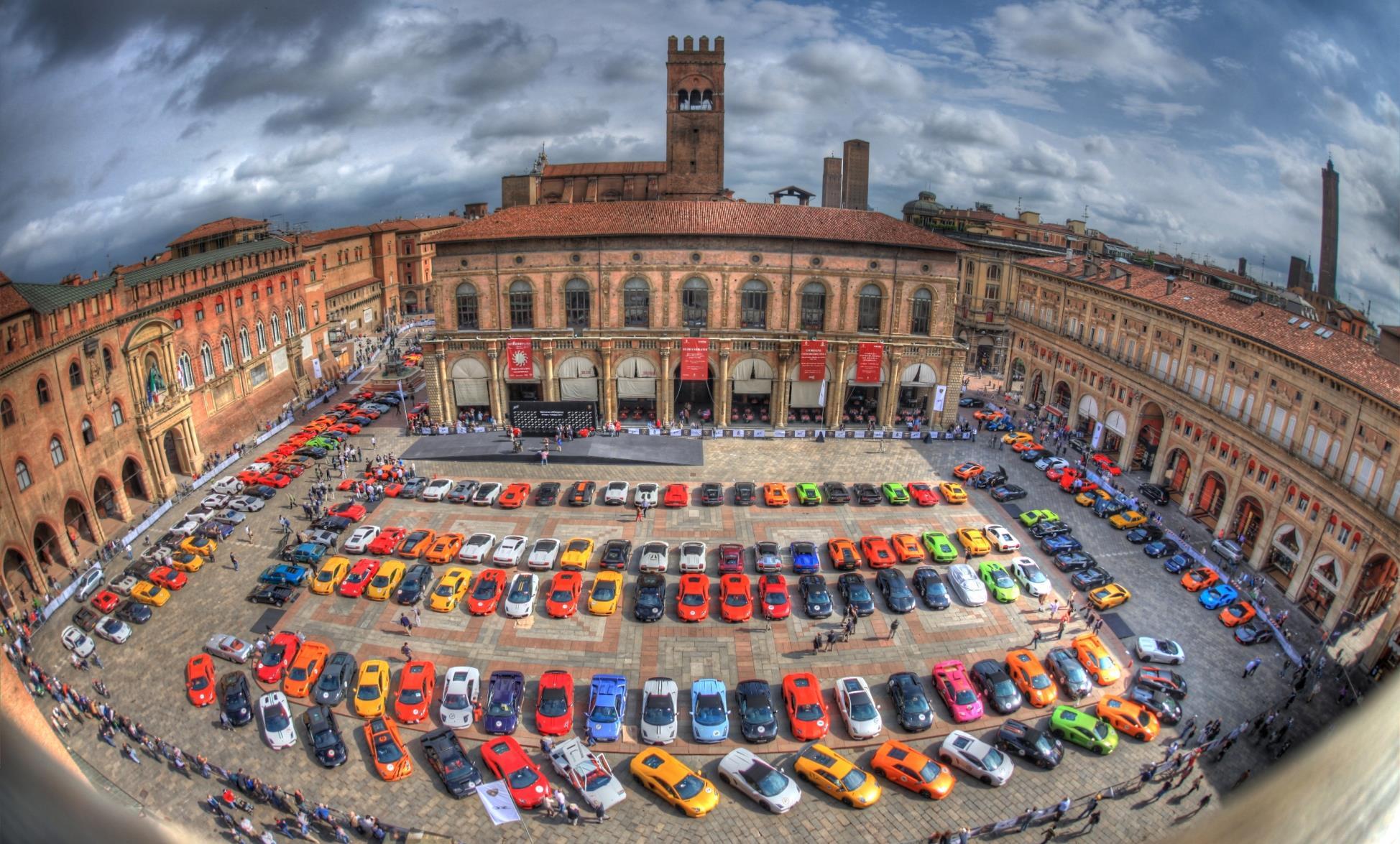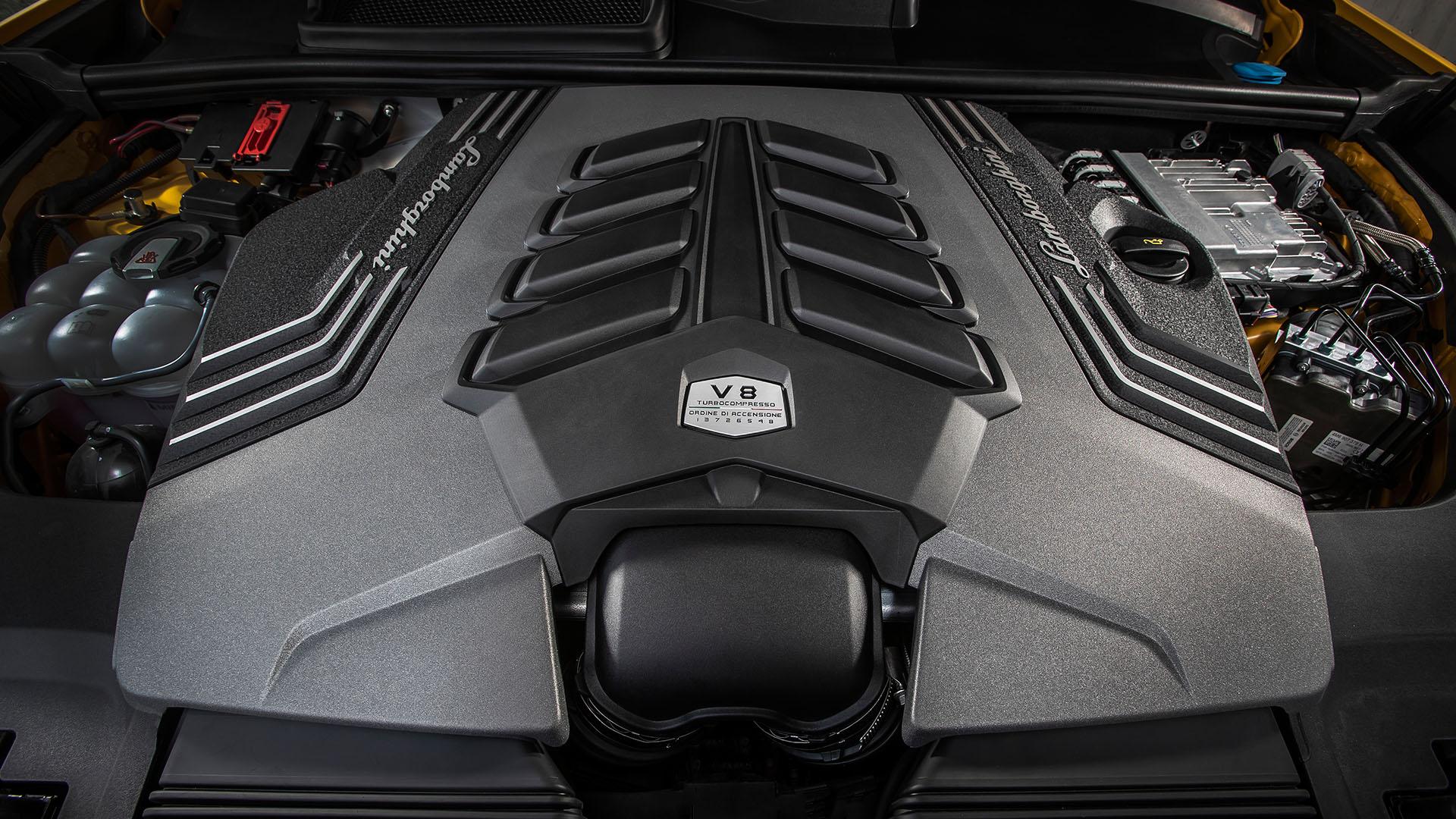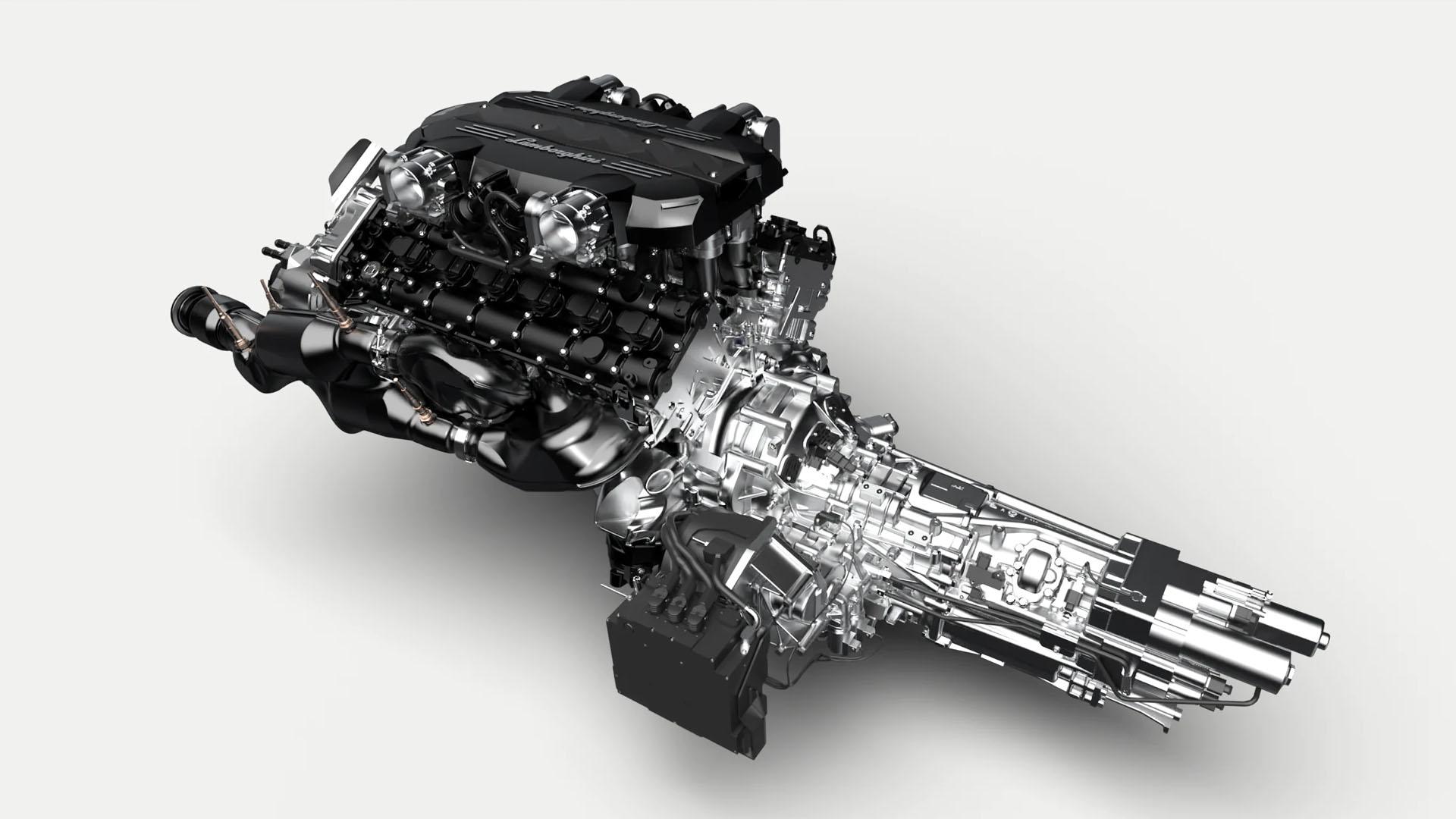When the late Ferruccio Lamborghini founded his car factory back in 1963 he might not have a clear idea of how his new car would look, but he did have one thing set in his mind, the new Lamborghini car needed a V12 engine, for his high-speed, luxury cruiser only the power and smoothness of a big V12 engine would do, so he got into a partnership with Giotto Bizzarrini to develop a bespoke Lamborghini engine.
And the timing was perfect for Ferruccio, as Giotto Bizzarrini recently parted ways with Ferrari after working on the legendary Ferrari 250 GTO, rumor has it Ferruccio asked Giotto for as much horsepower as possible for his new engine, a bonus would be paid based on the final output, and Giotto delivered a masterpiece: a 3.5-Liter V12 that roared into life on Lamborghini’s very own Schenk Dynamometer on May 15, 1963, with power reaching a staggering 350 DIN (374 SAE) hp at 8000 rpm.
The Lamborghini 350 GTV Engine
A list with the most iconic engines Lamborghini ever made isn’t complete with this initial V12 right at the top, the engine built by Giotto Bizzarrini for Ferruccio Lamborghini, he created a work of art to be used in the very first Lamborghini production car, but first, it had to be fitted into the 350 GTV prototype, the car that wanted to showcase to gathered members of the press during his press conference at Sant’Agata on October 29th, 1963 as a glimpse into the future of automotive design:
But as it happened, Giotto Bizzarrini had even higher aspirations, he was convinced he could fine-tune this new Lamborghini V12 engine to deliver 400 hp or more at 11,000 rpm, a high-pitching race engine so to speak, but that was a total opposite to what Ferruccio had in mind, he wanted a care-free but very fast and smooth V12 engine for his new Gran Turismo car, a luxurious two-door with amazing styling … he insisted his new car could do 70,000 km before an overhaul, so power output had to be lowered to a more conservative 270 bhp at 6500 rpm for the final production model from Sant’Agata, Bizzarrini wasn’t thrilled with this decision and left Automobili Lamborghini SpA shortly after that which left Dallara and Stanzani in charge of de-tuning the engine.
As time would tell, the ‘Bizzarrini’ V12 would go on for many years in countless subsequent Lamborghini models, growing both in displacement as in power output, first to a 4-Liter version for the 400 GT model all the way to the Espada over the Islero and Jarama, before the same base got used in the Lamborghini Countach in the Seventies, where displacement would grow to 4.8-Liter in the LP500 S version, and Lamborghini still wasn’t completely done with the Bizzarrini based V12, it would live on in the Diablo and all the way up to the Murciélago Super Veloce in 2010, only to be replaced by a new design for the Lamborghini Aventador.
The Miura V12 Engine
It would take Lamborghini only a few years to really make a difference in the automotive world, and while Ferruccio loved his fast GT cars, luxurious and comfortable, but still capable of going down the highway at stupendously high speeds, it wasn’t until he revolutionized the car world with the Lamborghini Miura in 1966, considered by many the world’s first supercar, and one of the most beautiful designs on wheels ever made, the Miura had an aggressive look, but still had a sensual touch over her, an Italian beauty, plain and simple.
But it was the massive V12 engine that really was impressive for a company that was only three years old at that time, still based on the original Bizzarrini design used in the 350 GT, but for the Miura, Gian Paolo Dallara and assistant Paolo Stanzani designed a chassis that would house this big 3.5-Liter V12 behind the driver and passenger, and more importantly, in a transverse position, hence the TP400 internal designation for the Miura during production.
This innovative engine was formed from a single aluminum casting that combined the cylinder blocks, crankcase, and transmission into one unit, power was increased to 360 hp initially but raised to 385 hp for the SV version, but this wasn’t the kind of car Ferruccio wanted to build, this would be a very low, difficult to drive car, not the luxury GT he intended, still, he saw the potential of the Miura to make money for him, being the businessman he was, Ferruccio gave the green light to produce the Miura in limited numbers.
For once Ferruccio was wrong, as it would be the Lamborghini Miura that made Lamborghini famous all around the globe, this would become the car that cemented the Lamborghini name in automotive history books forever, and that transversely mounted V12 engine, that was actually inspired by the Austin Mini, would become her trademark, making this one of their most iconic engines for sure.
The V12 Quattrovalvole Engine
After the Miura made Lamborghini a household name among car enthusiasts, they came up with something even more mind-boggling in 1971, the Lamborghini Countach, a spaceship on four wheels ready to shred the road ahead to pieces with a brand new 5-liter V12 engine in yet another innovative design, this time the engine was swapped around lengthwise, facing backward with the gearbox right underneath the lever in the driver’s hand using rods to go underneath the entire engine to the rear where the power was transmitted to the rear wheels.
But that completely new engine didn’t cope well during initial testing, and Bob Wallace blew it up during one of his test drives, three years later, when the Countach was ready as a production model, the engine was a smaller displacement 4-Liter unit with a completely different cooling system, that engine would grow to 4.8-Liter for the LP500 S model, but a major step was made with the Countach Quattrovalvole.
And it is this latter engine that’s an icon for Lamborghini, while the LP500 S came with 375 hp, and the company did some testing with turbo-charging their V12 masterpiece, in the end, the option went to adding more valves to the cylinder heads and increasing displacement to 5.2-Liter for a total power output of 455 bhp at 7,000 rpm … the top speed in a decently tuned Countach Quattrovalvole was 295 km/h (183 mph), if you didn’t opt for that massive rear wing, rumor had it you could pass 300 km/h … in the late Eighties, making the Countach once again the fastest production car in the world, note that Lamborghini changed the Weber carburetor setup for some markets, using different manifolds and fuel injection.
A New V12 Engine for the Aventador
Lamborghini managed to steer away from the easy option of slapping one or more turbochargers onto her V12 engines for decades, the Bizzarrini based V12 engine would continue to be used in the Lamborghini Diablo and the Lamborghini Murciélago, where it would deliver about 670 hp in the Super Veloce edition, but by 2010 it became obvious the life span of that unit had come to an end, and for the successor to the Murciélago they just had to design a new flagship V12 engine.
The internal code name L539 would become the new engine for the 2011 Lamborghini Aventador, still a V12, still 6.5-Liter displacement as seen in the later Murciélago models (almost double the 3.5-Liter displacement from the original Bizzarrini engine) and a massive power output of 700 hp driving all four wheels in the Aventador LP700-4, and even a decade later, with power being gradually raised to 780hp, still no turbos for the latest Lamborghini flagship.
This would also become the first Lamborghini engine to be used in a hybrid Bull, I wouldn’t really state this as a Lamborghini hybrid production model, as both the Sian and the Countach LPI are produced in very limited numbers, but the 34 hp electric motor powered by a supercapacitor is added onto the L539 based V12 ICE engine, which makes the latter even more iconic, and this engine will remain a very important chapter in the history of Lamborghini as the Aventador successor that will come out in a year or two will no longer use this engine but will be getting yet another, new V12 with a hybrid system integrated right from the start.
Turbos For The First Time
For many years Lamborghini had only one or two models in their lineup, on one hand, the V12 flagship models with their iconic upward-opening doors, and on the other hand the V8 models in the early days and later the V10 ‘entry-level’ model Gallardo and Huracán … but none of those would ever come with a turbocharger from the factory.
Thing considerably changed when Lamborghini unveiled the Urus in 2018, their Super SUV that came with a 4-Liter V8 engine … with two turbochargers fitted right from the start for a total power output of 640 hp at 6,000 rpm and a monstrous 850 Nm of torque that could take this five-seater (depending on configuration) Sport Utility Vehicle to a top speed of 305 km/h and accelerate from a standstill to 100 km/h in just 3.6 seconds … that’s faster than a Countach mind you!
The Lamborghini Urus was the first car to leave the factory in Sant’Agata with turbochargers fitted, apparently, there was no other way to create the world’s fastest SUV otherwise, and rumor has it, the Urus will become the first hybrid production car from Lamborghini too after her mid-life facelift that is just around the corner at the time of writing.
The Others
There are a few other noteworthy engines that have come out the factory gates in Sant’Agata, and while some of them were very important in the grand scheme of things, I wouldn’t really call them iconic.
Like the V8 engine found in the Lamborghini Urraco, initially a 2.5 liter that was increased to 3-Liter for the Urraco P300 and Silhouette, while in the Eighties the Lamborghini Jalpa would get a 3.5-Liter V8 engine. Power ranged from 220 hp in the Urraco P250 (I’m not even counting the measly 182 hp from the P200 for the Italian market) to 255 hp in the Jalpa P350 that was built until 1988.
It would take Lamborghini until 2003 to release another ‘Baby Lambo’, this time called the Gallardo, they fitted a more suitable exotic engine, a 5-Liter V10 with 500 hp that would gradually be increased up to 570 hp in the Gallardo LP570-4 Superleggera, and the V10 would be used again in the 2014 Huracan, now with 610 hp that would grow to 640 in the Huracan STO, the street-legal Super Trofeo inspired masterpiece.
But I believe the most iconic engines in the history of Automobili Lamborghini SpA are their majestic V12 units, they are used in the flagship models ever since the early Sixties, and they are what made Lamborghini famous for being outrageous, loud, obnoxious … for being Lamborghini in the end, period.
What’s Next?
I’m sure by now we all know the next generation of Lamborghini supercars will start out as hybrids, the plan is to add an all-electric model in a few years in the GT range, Stephan Winkelmann has already confirmed the Aventador successor will retain a V12 engine, but it will be a completely new engine, built as a hybrid from the start, as for the Huracán replacement that will come shortly after the flagship model, it has been confirmed it will be a hybrid too, but there is no confirmation the V10 will be retained, they might turn to a V8 engine as in the Urus, which most likely will become Lamborghini’s first production hybrid model.
The image above shows the hybrid 6.5-Liter V12 engine found inside the limited edition Lamborghini Countach LPI 800-4, with the electric motor coupled directly to the gearbox, powered by a supercapacitor behind the two seats in the cockpit … this engine will not be used for the successor, most likely we’ll be seeing a small displacement V12 instead with a more potent electric motor, mind you in both the Sian and the new Countach, that electric motor only adds 34hp … and 34 kg of additional weight … I wonder if the new V12 flagship from Sant’Agata will finally break the 1,000 hp barrier, I sure hope so.

